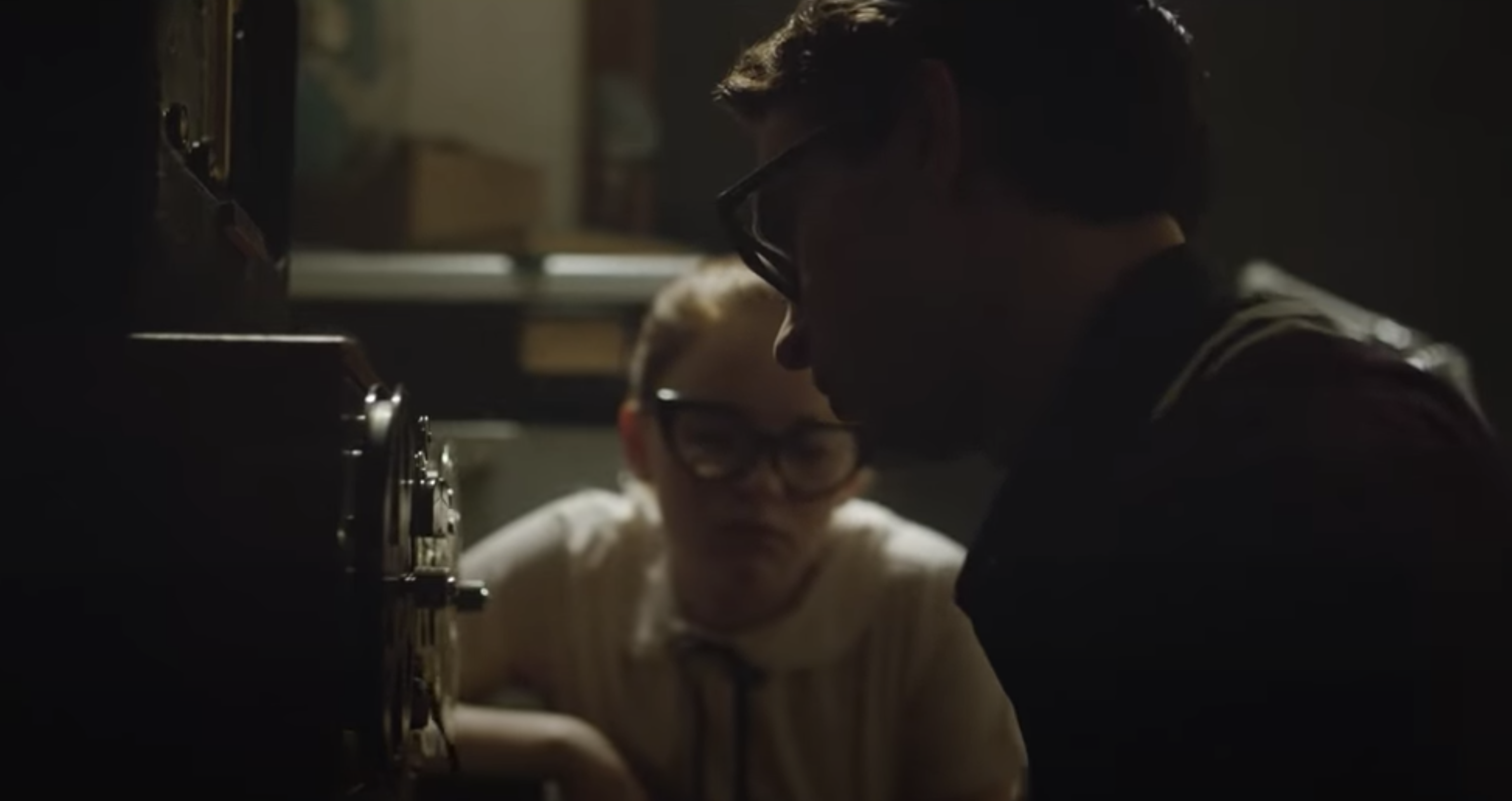Review: “OPPENHEIMER,” an epic in the old Hollywood sense
It’s not often that a film without superheroes or Tom Cruise leaping from cliffs is shown in IMAX, let alone on 70mm film stock (remember film?). “Oppenheimer,” Christopher Nolan’s much-anticipated, nearly three-hour solipsistic walk through J. Robert Oppenheimer’s complicated, extraordinary life demands to be seen on the largest screen possible: The IMAX experience not only makes the staging of the atomic bomb test that much more extraordinary—and, indeed, horrifying—it also helps bring to the fore Oppenheimer’s tortured soul in the wake of unleashing such awesome power upon a world that will do anything but stop applying it for destructive purposes.
For this, much credit must go to Cillian Murphy, whose voice Nolan employs (in his particular way) as the guide though not necessarily the “narrator” through this epic tale. When first we meet Oppenheimer, World War II is over, though it is now the height of the McCarthy era. Murphy’s singular face and haunting blue eyes stare directly into camera in close up as his unseen interlocutors prepare to butcher his reputation and his legacy. This is followed by images of tremendous fireballs—the externalization of the forces the singular mind of the physicist has unleashed. For Oppenheimer is the twentieth century Prometheus, bringer of fire. Nolan in fact superimposes such text over the great conflagration, not merely to underline the scientist’s connection with the Greek legend, but also in nod to “American Prometheus: The Triumph and Tragedy of J Robert Oppenheimer,” the book by Kai Bird and Martin J. Sherwin upon which his screenplay is partially based.
As has been his fashion since the extraordinary “Memento” back in 2001, Nolan’s new film will toy with time and reality, bouncing back and forth between Oppenheimer’s 1950s “trial” by kangaroo court—though he is told repeatedly it is not a court, he is treated as an enemy to America, for reasons that become clear—to his early life learning under the great physicists of Europe, including Niels Bohr (Kenneth Branaugh) and Wener Heisenberg (Matthias Schweighöfer), all of it preamble leading up to the inevitable secret facility at Los Alamos in the New Mexico desert as the clock to beat the Nazis to the bomb is on.
Oppenheimer’s 1950s-era haranguing by the G-men is horrifying yet, in its way, understandable: Soviet spies were employed at Los Alamos under his watch, and in the new Cold War with Moscow, bigger and more powerful weapons will be built—a premise for which Oppenheimer publicly voices his opposition. Dissent was hardly countenanced by the likes of McCarthy and J. Edgar Hoover, and thus, as Oppenheimer discovers, yesterday’s allies against Germany are today’s enemies. And, as a Jew, Oppenheimer’s associations with war-era communists, seeking to undermine Hitler’s monstrosities across Europe, are utilized as leverage against him. His philandering outside the marital bed adds yet more kompromat for Hoover and his spies.
Both the advent of the bomb and Oppenheimer’s later crucible before the board are displayed in glorious 70mm color, and yet Nolan also invests in a third narrative thread involving confirmation hearings for Lewis Strauss (Robert Downey Jr.), a nominee to serve in Eisenhower’s cabinet in the nuclear energy sector. It should be a boring, pro forma Washington process—perhaps why Nolan stages this segment entirely in black-and-white—and one character even reminds Strauss that no cabinet nominee has been rejected by the Senate in decades. However, this third point of the “Oppenheimer” plot triangle proves to be as fascinating as the other two storylines. If you know nothing of the real-life Strauss and how his bureaucratic ambitions intertwined with Oppenheimer’s downfall—I knew precisely zero—do yourself a favor and save the Google search until you get home from the theater. It’s a reminder that great men are as often sacrificed at the altar of ego as they are victims of their own appetites.
Downey is positively magnificent as the Manichean Strauss, and his tete-a-tete with Murphy’s Oppenheimer—one scientist in favor of fueling the arms race with Russia, the other virulently opposed to escalation out of genuine fears of nuclear armageddon—are among the best acting you’ll observe this year. Oscar nominations for both men should be assured.
And lest we forget, there are women in Oppenheimer’s life—two of particular importance. Florence Pugh, no stranger to slinky, complex performances, is pitch perfect as Jean Tatlock, the psychiatrist who is Oppenheimer’s lover both before and during his later marriage to Kitty (Emily Blunt). Though Blunt has far more screen time than Pugh, Kitty is largely rendered in the screenplay as yet another in a long line of sad movie wives of brilliant skirt-chasers who stand by their man no matter how much humiliation is visited upon their domestic and public lives.
For all its significant achievements, “Oppenheimer” is at its weakest in terms of its female characters. Though a female physicist joins the Manhattan Project, we learn almost nothing of her other than she once attended Harvard (she also has the wherewithal, as the only one on Oppenheimer’s team of eggheads with a uterus, to inquire if the enriched uranium brought to Los Alamos might harm her reproductive ability.) Blunt does her best with the long-suffering-housewife bit (spare me “but it’s true to her real life”), screaming at her husband when he deserves it, and tamping down further emotional outbursts with a handy purse flask.
Fine, even though the father of the atomic bomb was as human as any of us, “Oppenheimer”’s sexual theatrics prove the least interesting aspect of his fascinating life story. In the film’s single biggest misstep, Nolan for some reason inserts a sex scene where it has absolutely no business going; a reaction shot from the highly talented Blunt would have accomplished the desired effect he was going for just fine. It’s a strange moment of exploitative filmmaking undertaken, in my view, for shock value alone.
But never mind. “Oppenheimer” is an epic in the old Hollywood sense, an astonishing real-life tale of one of the greatest scientists in history who realized too late that his “progress” might mean humanity’s end. Hoyte Van Hoytema’s stunning cinematography is as much a star as Murphy, Downey, Blunt or the plethora of supporting players that includes Matt Damon as the Manhattan Project’s military leader, Leslie Groves, plus Josh Hartnett, Tony Goldwyn, Casey Affleck, Rami Malek and even a surprise guest cameo for a key scene staged in the Oval Office.
Nolan weaves together so many strands into a compelling morality play as only he can, and spices it up not with the incredible action scenes for which he’s justly famous but rather with one truly stupendous explosion—one Oppenheimer says has a “near zero” change of destroying the entire world, in several meanings of that term. And at a crucial moment in the film, when Murphy’s Oppenheimer says aloud, “Will the truth ever be known?” we cannot help but nod in recognition as a universal definition of “truth” can no longer be agreed upon.
Nolan again proves himself one of the greatest living filmmakers, and bravo for insisting on using film versus digital (reports indicate a new type of black-and-white stock was invented for 70mm specifically for him). Consider yourself forgiven for whatever the hell you were up to with “Tenet,” Chris, though I still shake my head when it comes to “Interstellar” and “Inception.” But I absolutely cannot wait to see what you conjure up next.
In theaters today.
Rated R for nudity and sex, four-letter words and some long, very long, chalk equations.
news via inbox
Nulla turp dis cursus. Integer liberos euismod pretium faucibua




